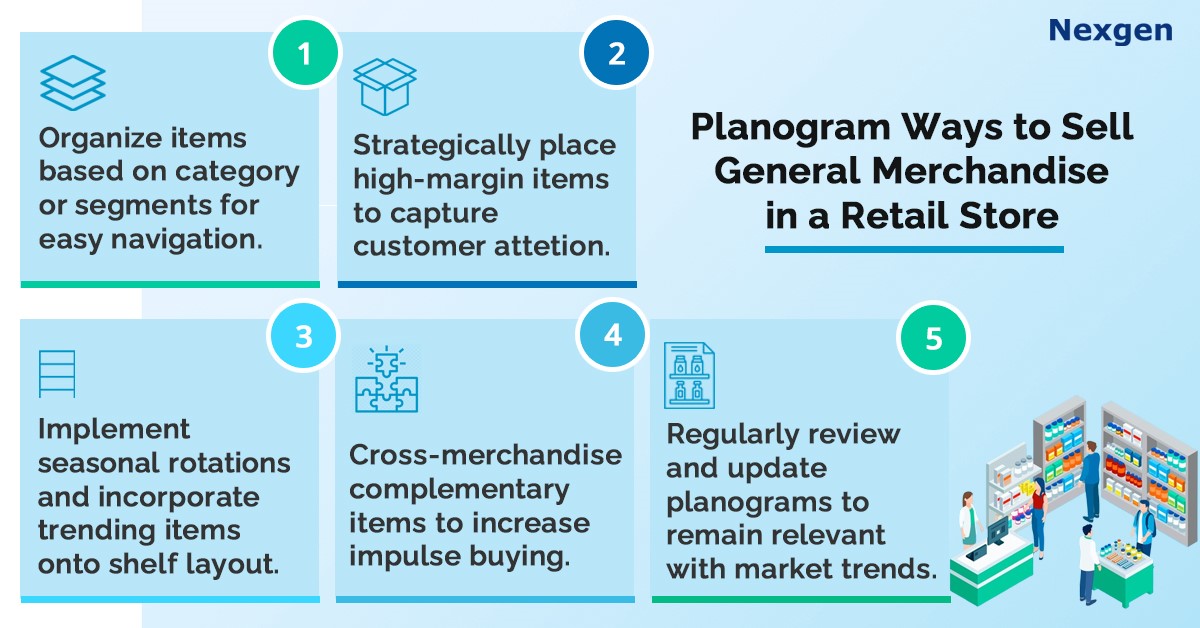During the 20th century, most rural towns in the U.S. relied on a single storefront, where people bought everything, they needed, ranging from shaving cream to sewing notions. These general stores functioned on a simple note – providing shoppers with an inclusive shopping destination offering a wide variety of products. Since these beginnings, the general merchandise market has undergone substantial growth, evolving into a significant segment of the U.S. retail landscape.
What is General Merchandise?
It is a store where a broad range of products are available in retail establishments, designed for regular use, excluding food and groceries. This category includes many items, including household items, electronics, clothing, tools, sporting goods, and home decor. In 2024, the sales of general merchandise are expected to exceed $800 billion in the U.S. alone. Therefore, creating an attractive and strategic shopping experience is crucial for driving sales. Planograms, visual representations of how products should be displayed in a retail store, play a key role in achieving this goal. For general merchandise, effective planogram services can significantly enhance the overall shopping experience and boost sales. In this blog, we will explore five planogram strategies that can help retailers sell general merchandise more successfully.

1. Segmentation and categorization.
Organizing general merchandise based on categories and segments is the first step towards creating an effective planogram. Grouping similar products together helps customers easily locate what they are looking for, streamlining their shopping experience. Whether it is kitchenware, home decor, or electronics, a well-organized planogram ensures that customers can navigate the store effortlessly, increasing the likelihood of making a purchase.
2. Strategic placement of high-margin items.
Identifying and strategically placing high-margin items within the planogram is essential for maximizing profitability. These items should be positioned at eye level or in prime locations within the store to capture the attention of shoppers. By prominently displaying products with higher profit margins, retailers can encourage impulse purchases and increase the overall revenue generated from each customer visit.
3. Seasonal and trend-based rotations.
General merchandise often experiences fluctuations in demand based on seasons and trends. Retailers can leverage shelf planning software, such as planograms to accommodate these changes by implementing seasonal rotations and incorporating trending products into the layout. Whether it is featuring winter essentials during the colder months or capitalizing on the latest fashion trends, aligning the planogram with seasonal and market trends keeps the store fresh and appealing to customers.
4. Cross-merchandising opportunities.
Create cross-merchandising opportunities by strategically placing complementary products together. For instance, if your store sells kitchen appliances, consider displaying them alongside cookware and utensils. This approach not only enhances the shopping experience by offering customers convenient product pairings but also increases the likelihood of upselling and impulse purchases. Planograms that capitalize on cross-merchandising can boost overall sales and encourage customers to explore a wider range of products.
5. Adaptability and flexibility.
The retail landscape is ever- evolving, and a successful planogram should be adaptable to changes in customer behavior, market trends, and product availability. Regularly review and update planograms to ensure they remain relevant and aligned with the current retail environment. This adaptability allows retailers to respond quickly to market shifts, capitalize on emerging opportunities, and keep the store layout fresh and engaging for customers.
Overview of Nexgen Planogram Services
Nexgen offers store-specific planograms for clients that optimize sales and achieve category objectives. We create customized planograms for your business to ensure that these are better aligned with your goals and merchandising strategies. Our expertise in planogram automation helps us build planograms faster, better and consistently. Whether it is creating a planogram from scratch, or a typical reset, we have the knowledge, tools, and experience to get the job done for you.
Get Your Free Trial Now!